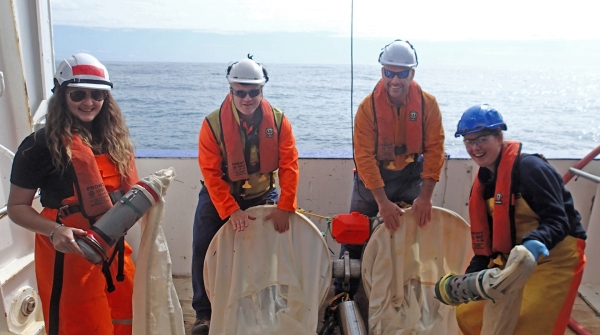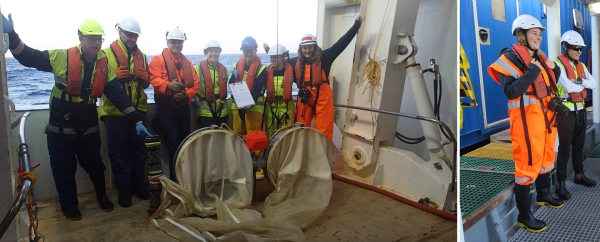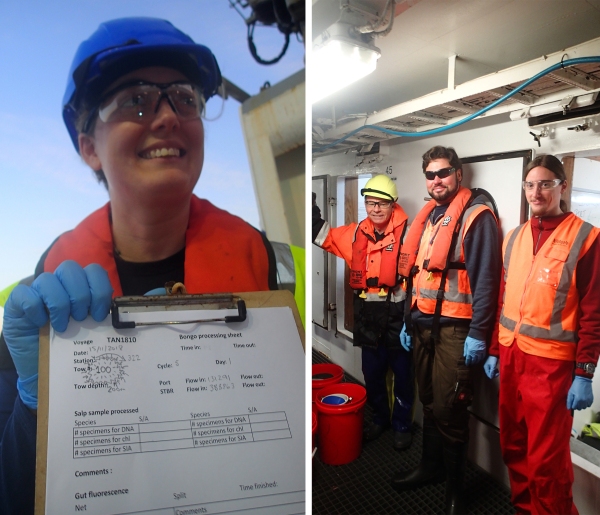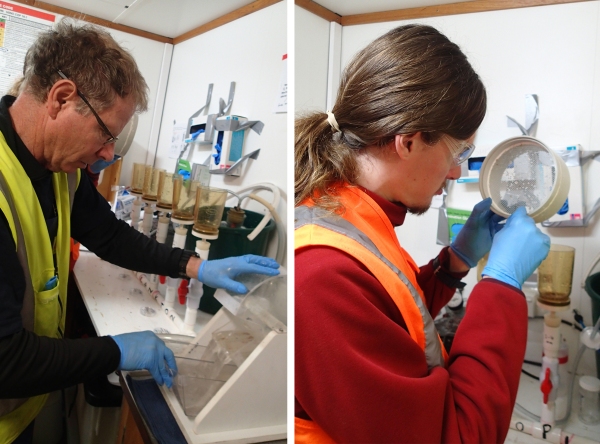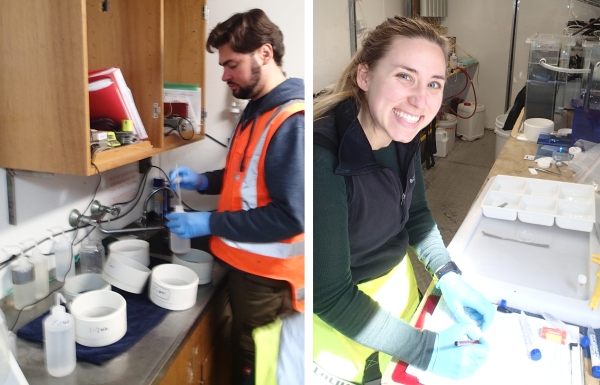16 November 2018. By Voyage Leader Dr Moira Decima.
We have been using one essential piece of kit to sample zooplankton, looking for areas that either have salps (for our salp cycles) or do not have salps (for our non-salp cycles to compare). Because zooplankton, salps included, can live at different depths in the water, we put these paired nets down to 200m, and investigate everything that comes back to us from the ocean.
Our sampling has been so intense on this voyage, that we just hit 100 bongo tows! Yep, we did our best to celebrate out here, even danced to the Bongo theme song “King of the Bongo”.
Of course, we don’t just put the net in and back. When it returns we have to process the sample, which includes putting critters through difference sieve sizes, so we can separate out the large ones from the small ones. Our amazing Bongo squad has thus deployed and retrieved these nets 100 times, as well as processed a whopping 200 samples (since there are 2 nets), from the Bongo tows alone!
The information we are collecting will help us understand not only salps and their role in the ocean, but also the relationship to other zooplankton such as copepods and krill, and how the different critters live and thrive in different parts and conditions of our EEZ.

